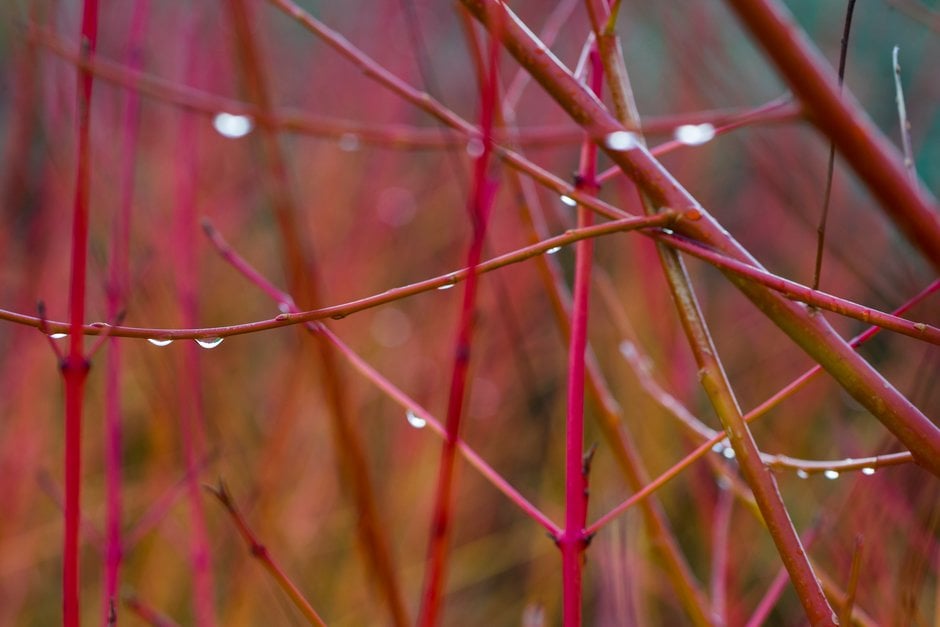Cornus alba L.
red-barked dogwood
A vigorous,suckering shrub with red stems, conspicuous in winter, and dark green foliage which takes on red or orange autumn tints. Flatheads ofinconspicuous, creamy flowers in late spring and early summer are followed by bunches of small, white berries
Synonyms
Swida albaCornus tatarica

Buy this plant
Size
Ultimate height
2.5–4 metresTime to ultimate height
5–10 yearsUltimate spread
2.5–4 metresGrowing conditions
Moisture
Moist but well–drained, Well–drainedpH
Acid, Alkaline, NeutralColour & scent
| Stem | Flower | Foliage | Fruit | |
| Spring | Red | Cream | Green | |
|---|---|---|---|---|
| Summer | Red | Cream | Green | |
| Autumn | Red | Orange Red | White | |
| Winter | Red |
Position
- Full sun
Aspect
East–facing or South–facing or West–facing
Exposure
Exposed or Sheltered Hardiness
H7Botanical details
- Family
- Cornaceae
- Native to GB / Ireland
- No
- Foliage
- Deciduous
- Habit
- Suckering
- Genus
Cornus can be deciduous shrubs or trees, or creeping, woody-based perennials, some with brightly coloured young stems. Tiny flowers are borne in dense clusters, sometimes with showy bracts. Many have fine autumn colour
- Name status
Correct
- Plant range
- E & N Asia
How to grow
Cultivation
Will grow in most soil conditions in sun or partial shade. For more information see winter stem colour cultivation or flowering dogwood cultivation
Propagation
Propagate by hardwood cuttings
Suggested planting locations and garden types
- Cottage and informal garden
- Wildlife gardens
- Coastal
- Flower borders and beds
- Cut flowers
- Hedging and screens
Pruning
Pests
Generally pest-free but may be susceptible to horse chestnut scale
Diseases
May be susceptible to cornus anthracnose and honey fungus
Get involved
The Royal Horticultural Society is the UK’s leading gardening charity. We aim to enrich everyone’s life through plants, and make the UK a greener and more beautiful place.